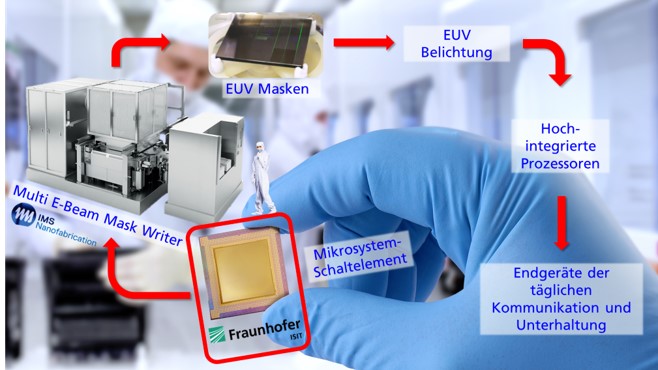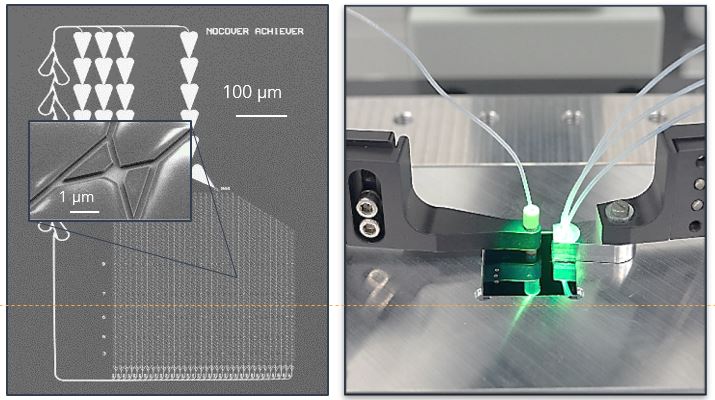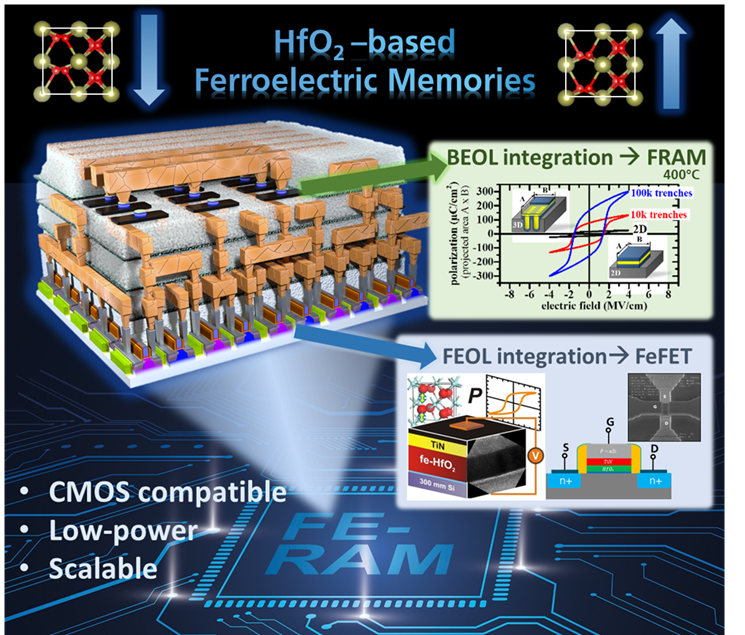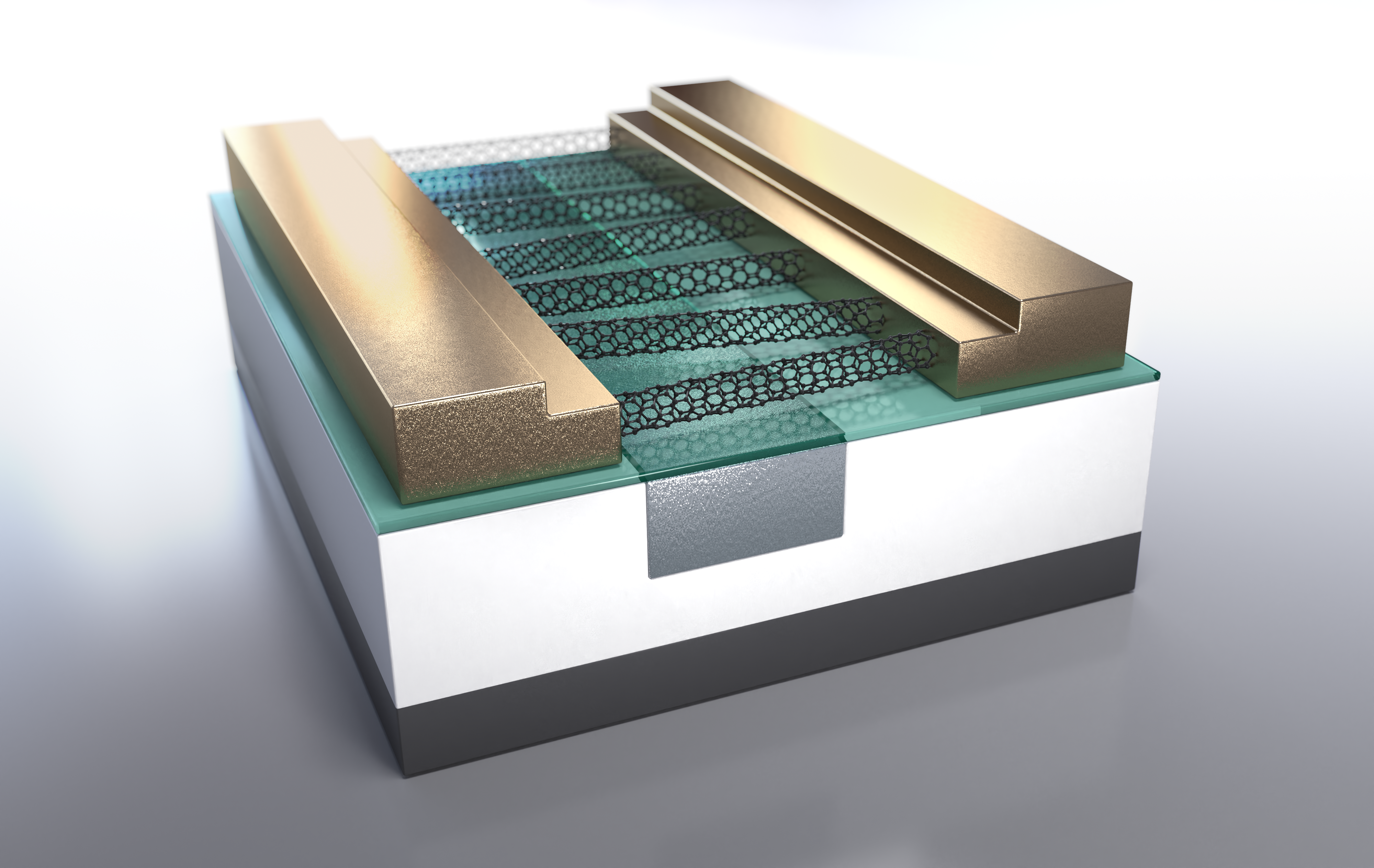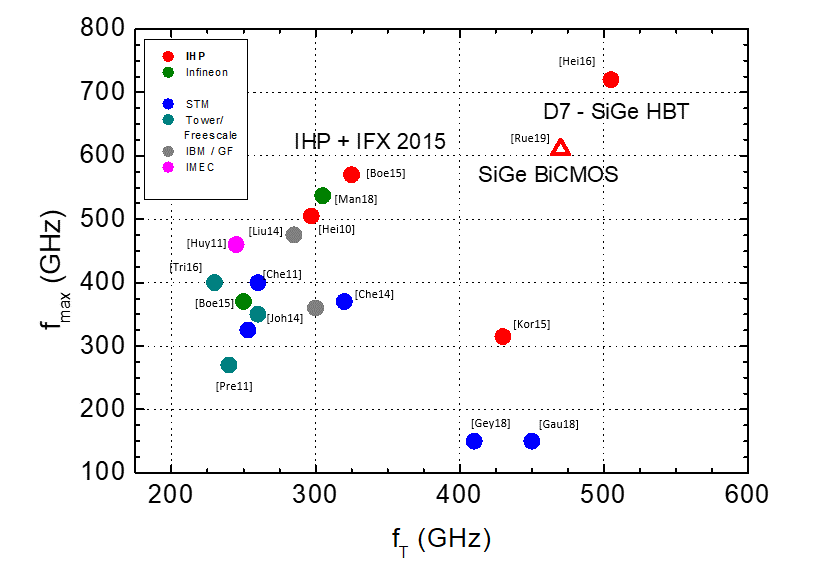The technology platform Extended CMOS focuses on materials and processes, system integration as well as characterization of materials, test of devices and reliability assessments.
The FMD offers long lasting experience and know-how in developing and manufacturing of CMOS-based components and systems within its cleanrooms:
- Fully equipped state-of-the art 200 mm BiCMOS and CMOS lines
- Processes for FEOL, MOL, as well as BEOL
- New materials, processes and technologies, like new memory concepts and neuromorphic computing technologies are pursued
- 1D, 2D materials and technologies; 2.5/3D integration technologies
- R & D services for TSV, wafer bumping, redistribution layers and solder balls
- Fabrication of high density silicon, glass and polymer interposer, wafer thinning, dicing, wafer to wafer bonding, high precision multi-die assembly, die stacking, and molding
Extended CMOS along the value chain
Europractice IC Service: Multi Project Wafer (MPW) and Prototyping
Within the EUROPRACTICE IC Service, the Leibniz IHP as part of the Research Fab Microelectronics Germany, is providing a manufacturing service for Multi Project Wafer (MPW) and Prototyping. More information here.
 Fraunhofer Group for Microelectronics in cooperation with the Leibniz institutes IHP and FBH
Fraunhofer Group for Microelectronics in cooperation with the Leibniz institutes IHP and FBH
